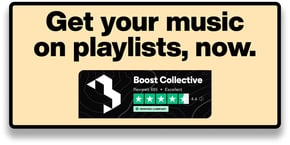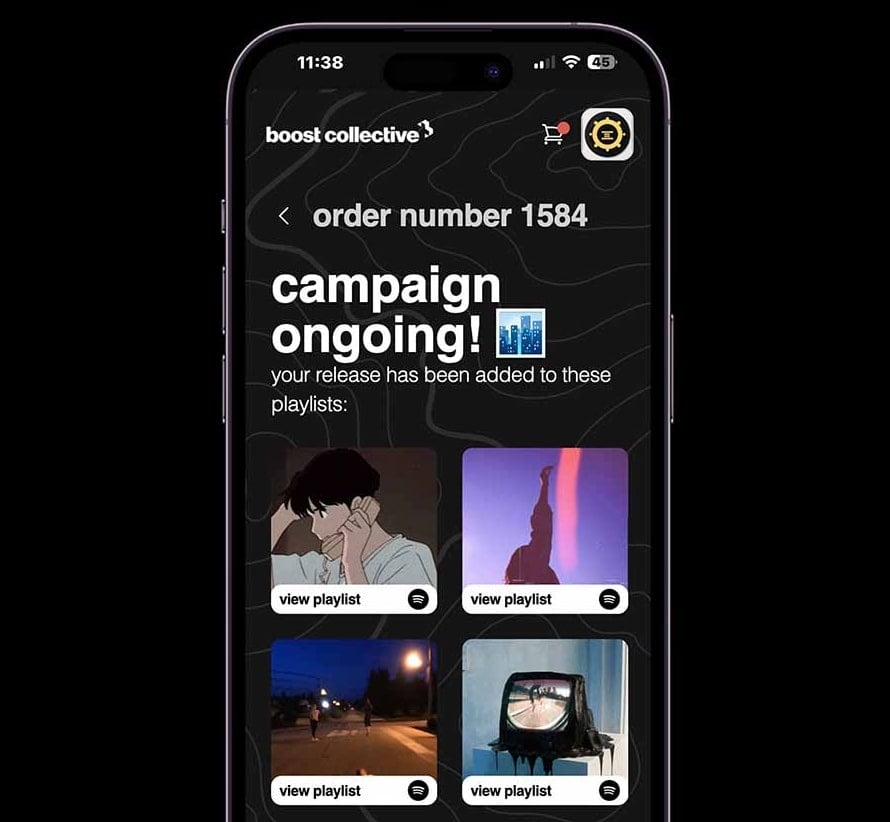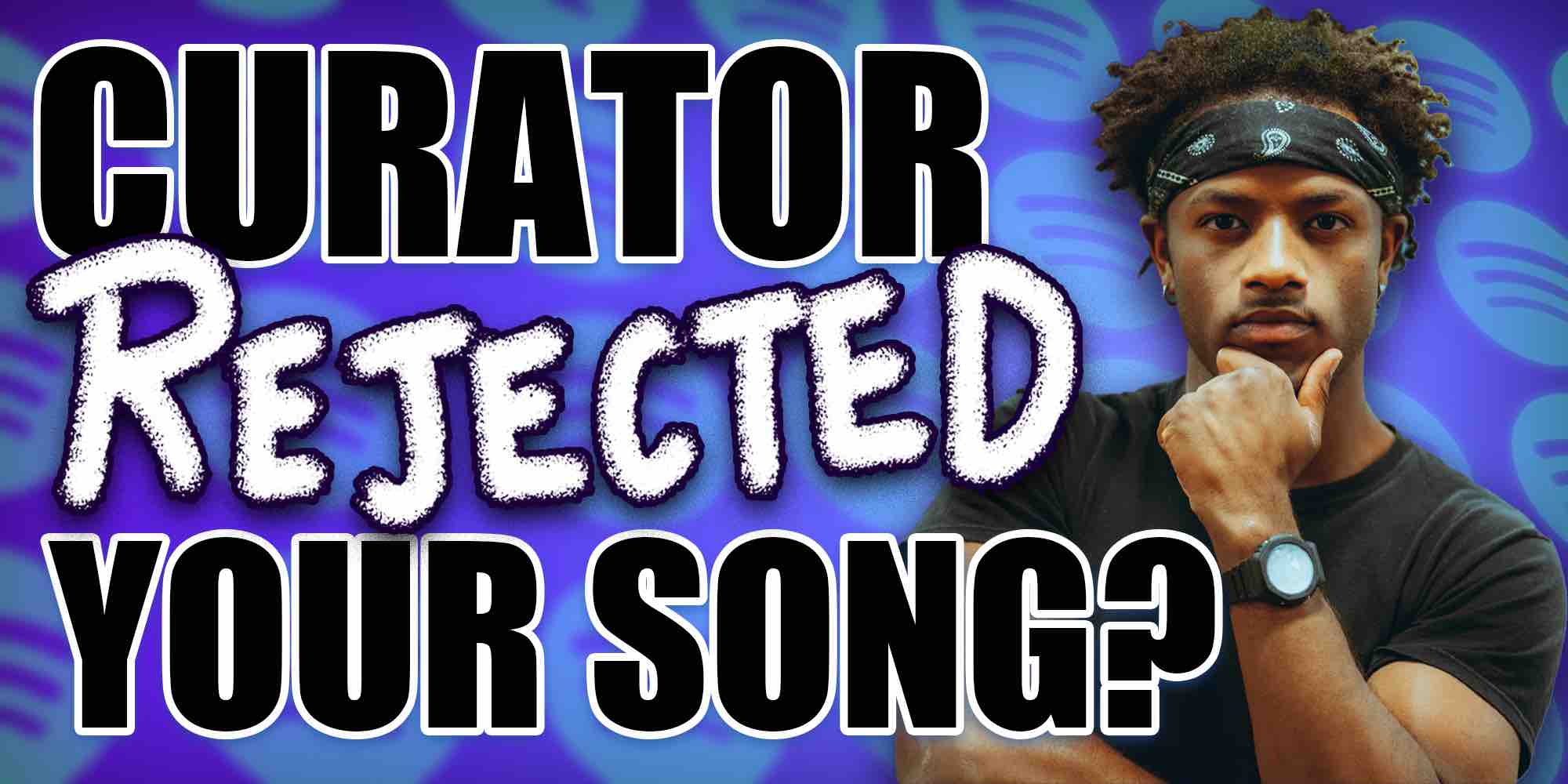
8 common Reasons curators reject your music
Did you ever get your song rejected by a Spotify playlist curator?
Here are a few reasons.
8 reasons artists get rejected by playlist curators:
- Confused by the sub-genre
- The 30-second rule
- Your song isn't very dance-able
- Keep it niche-specific
- The valence (emotion) isn't cutting it
- Too many or too few words
- Energy level doesn't fit the vibe
- Your song is out of synch
Don't worry, just follow this guide and you'll be getting placements left and right!
#1. The song isn't the right sub-genre
Don't submit your lofi track to a jazz Spotify playlist.
The curator knows the difference and won't let it fly.
On your end, as the content (music) creator, it’s quite simple, as long as your song fits in the genre you’re a likely candidate to get in the playlist, right?
Well…. It’s not that simple. Especially if it's your first time.
See, your song may indeed be the correct genre - but the subgenre matters a lot.
Bonus: Check out Boost Collective's https://www.boost-collective.com/promote-on-spotify here - our free-to-use platform is a must-join for all independent artists:
If you asked 10 people what the meaning of hip-hop is you’ll get different answers throughout.
What you consider to be a specific genre may not be the same to the curator. Who’s right and who’s wrong?
It doesn’t matter.
Regardless of what “real” hip-hop or what “authentic” rock music is, at the end of the day it’s up to the curator to decide if the song is close enough in the genre to fit in the playlist.
So… What are you supposed to do about this?
The solution is much simpler than you think.
Here are 3 simple (but easily ignored) steps:
- Listen to 5 tracks in the playlist
- Analyze which sub-genre it fits into
- Verify if your song fits
I'm going to show you the #1 method to figure out which genre the curator is looking for.
Curators aren't objective all-knowing gods. Each curator has their own "definition" of what a certain genre is.
Not all genres are made equal. Let’s say you make house music for example.
You have a definition of what house music is based on your region of origin, or how you were introduced to it.
These are common sub-genres of house music:
- Deep house
- Future house
- Tropical house
- Trance
- Dubstep
First, let’s analyze a playlist, for example, let’s use this one:
Sound like normal hour music, eh? Well, what about this one:
Yeah, they're both considered "house" but sound super different.
That's what makes music so great!
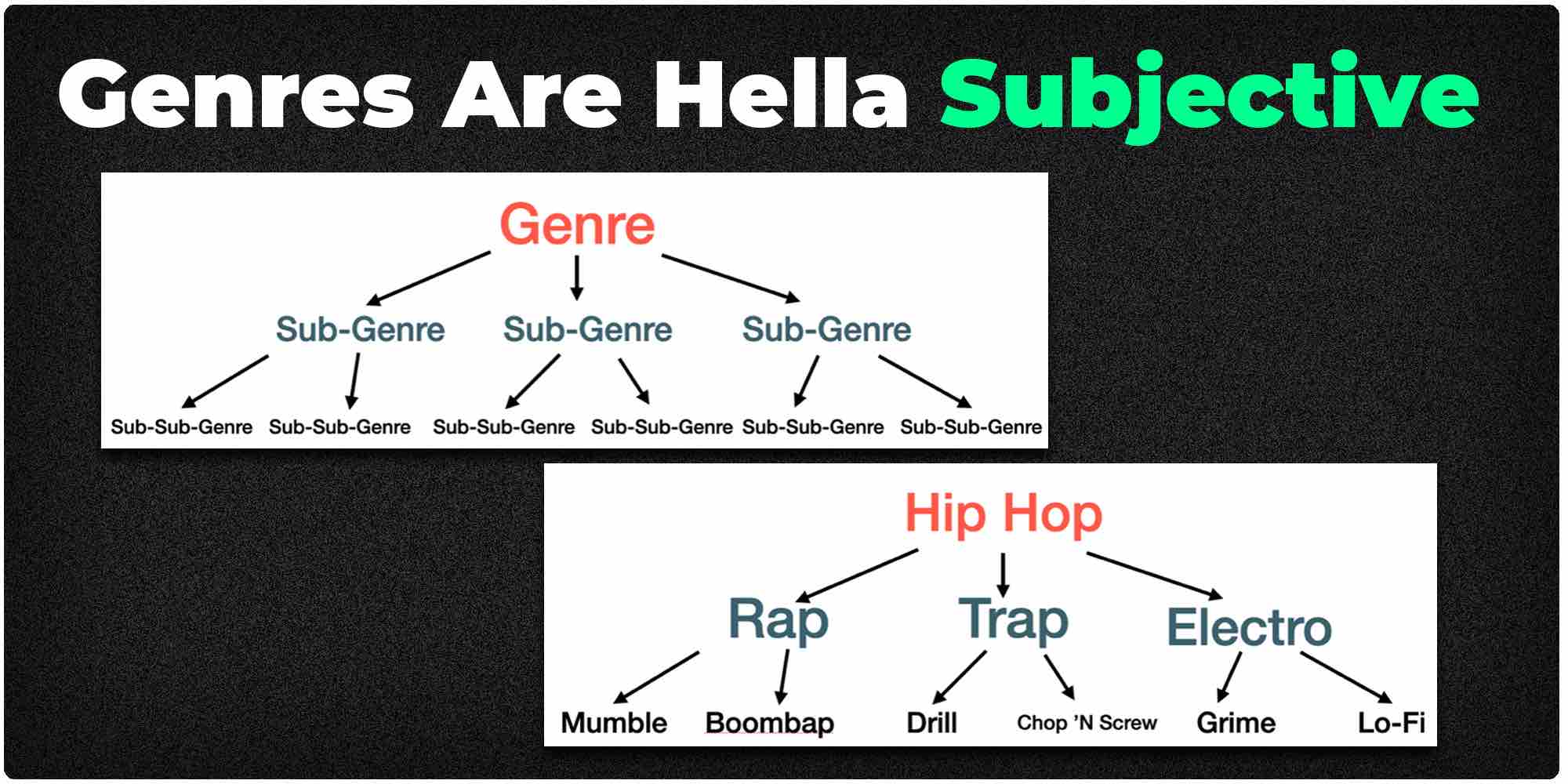
Do you want to increase your chances of getting on a playlist or not?
You need to listen to the playlist and select a good one.
I suggest putting the playlist on shuffle play and listening for these key factors:
- Tempo
- Bass
- Speechiness
#2. The first 30 seconds
Curators are humans too. That means they fall for the same weaknesses and biases artists have.
In a way… Curators are artists, putting together good sounds to create a good musical product for the public to enjoy.
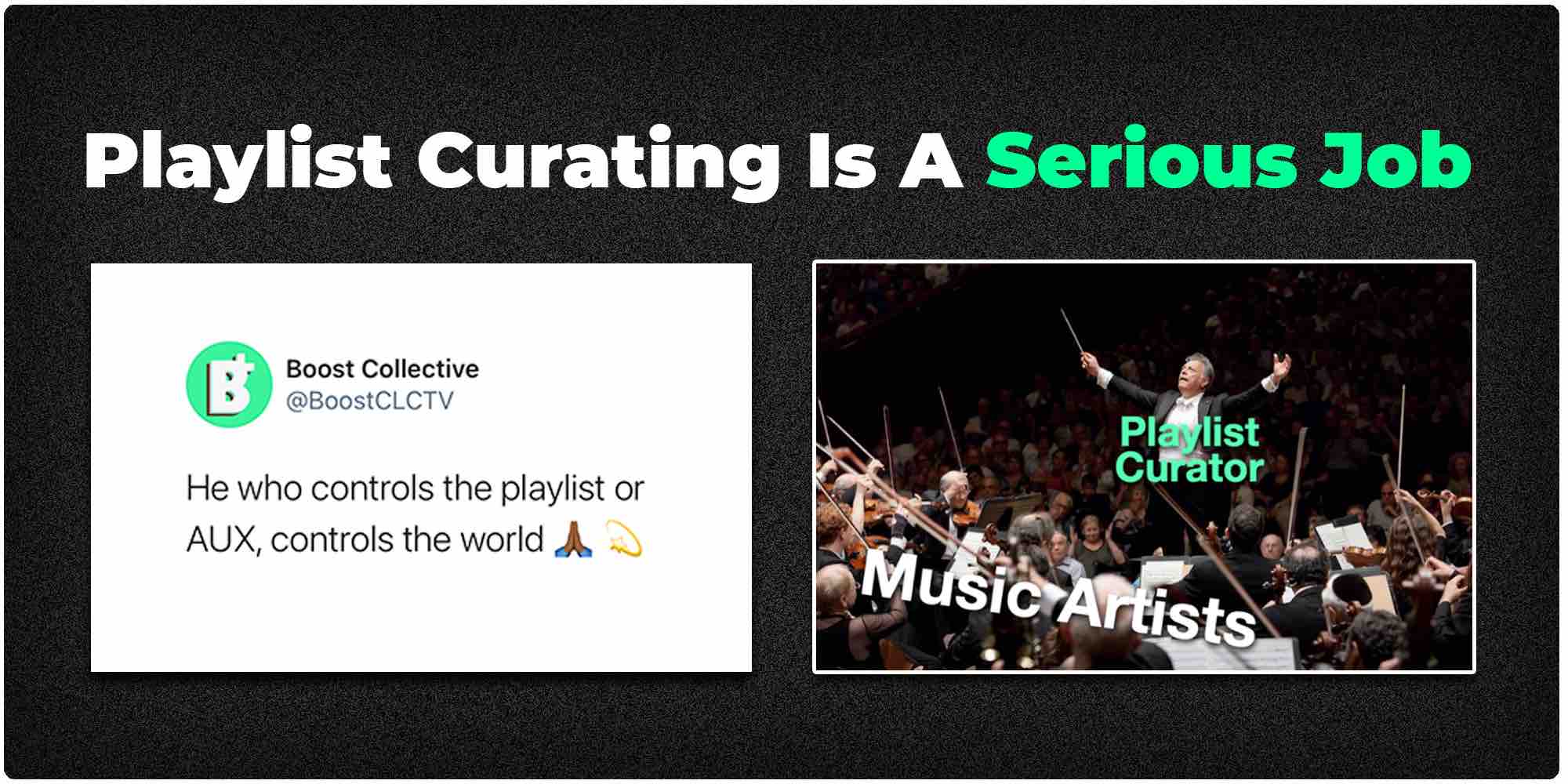
Being a critic of public opinion, curators have to make decisive choices about whether to add your song or not.
They don’t have time to think about it for many days.
I asked 100 curators how long they listened to a song.
The general answer is 30 seconds.
Ya' hear that? The first 30 seconds either MAKE or BREAK your chances of acceptance.
Don't forget curators are human too.
When you Submit your music to Spotify playlists it's ESSENTIAL to remember that.
They are bound to make judgments and biases - you must always take this into account when submitting.
You may not like this, but you may have to choose a more playlist-friendly song when submitting.
There's a good chance if a curator does not like the first 30 seconds, then fans won't either.
You can use this as a screening test.
Here are some things to ask the curator
- How long did you listen to the track?
- Did you scrub through the song as well?
- Do you think I should add/remove some aspects?
Curators rarely keep talking to you after the initial response.
That being said:
If you are respectful and make yourself relatable, the curator may give you deeper insights!
After all, they listen to new music and critique every day!
The solution isn't 100% assured, but the insights are priceless.
With this info, you can target your future (or even this release) so your fans are enticed to listen more. Remember this, Spotify only counts it as a stream when a listener hears 30 seconds or more of the track!

Now this can be an issue for you.
Sometimes adding that 45 second intro can work for Kanye West or Drake because their fan bases already have high expectations and won't mind sitting through that.
For small-time independent artists, however, many listeners won’t give you the time of day.
A decent method is to submit songs that start catchy to Spotify Playlists and try using that as bait to lure fans into your other tracks.
#3. Your song isn't very dace-able
If your song isn't groovy enough for Jabari to start breakdancing, It probably won't work in dance-able playlists.
Think about this: why aren’t Mozart and Beethoven commonly played in the 21st century?
It’s because we live in the age of fun and gratification, life is so abundant that every day can be a cause for celebration!
What do you do when you’re turning on your PS4 to play some video games?
Listen to music.
What do you do when you’re at a party and it’s starting to get dry?
Play some bomb music.
What do you do when you’re alone in your house in your underpants?
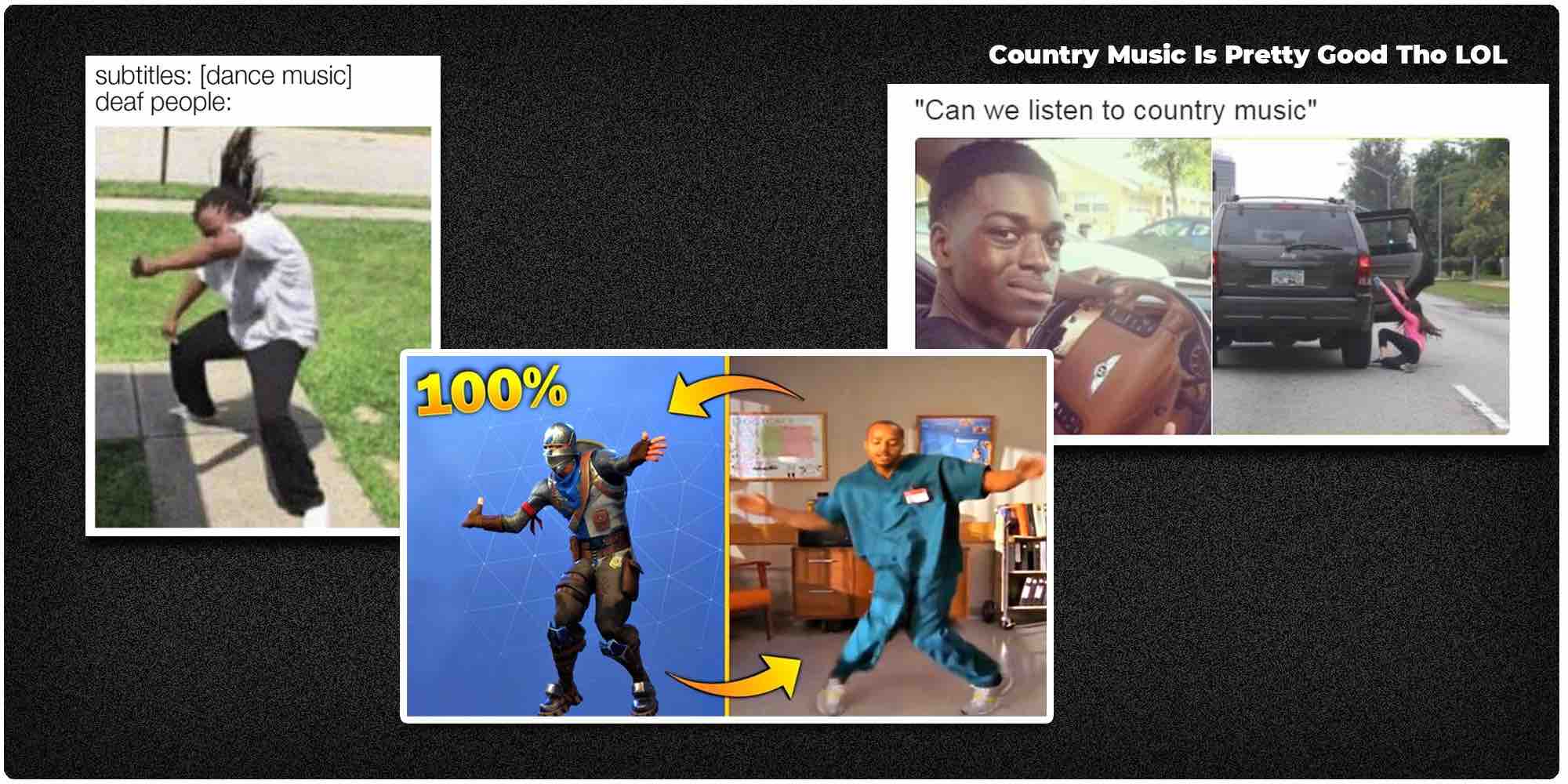
Everybody listens to music while doing stuff during the day whether it's gaming, doing chores, or whatever.
Music is a great background substance.
Hype music gets people’s blood boiling and makes them feel alive!
This is why danceable songs do so well in playlists.
(This also explains why music with fast tempo and danceability such as Hip Hop and EDM are increasingly crushing the music market)
If a curator feels like your music doesn't have enough danceability to match the other danceable songs in the playlist, there's a great chance it won't be added.
Even chill songs can be danceable, like this for instance:
Similar to how there are different styles of music and many styles of dance.
Curators choose to add songs based on how they make the listener feel:
There is no so stronger feeling music can give you than to dance.
Have no fear.
The main trick is... Submit to niche playlists.
This is the meaning of niche in this case:
Niche curators care less about the overall danceability of the track - the goal isn't to attract mainstream appeal.
The idea is to get a highly-specified appeal.
See, getting highly-targeted appeal is worth MUCH more than general appeal because these people are the type to ride or die for you.
What are super-fans and what do they do?
- Buy your merch
- Go to your live performances
- Engage with you over on social media
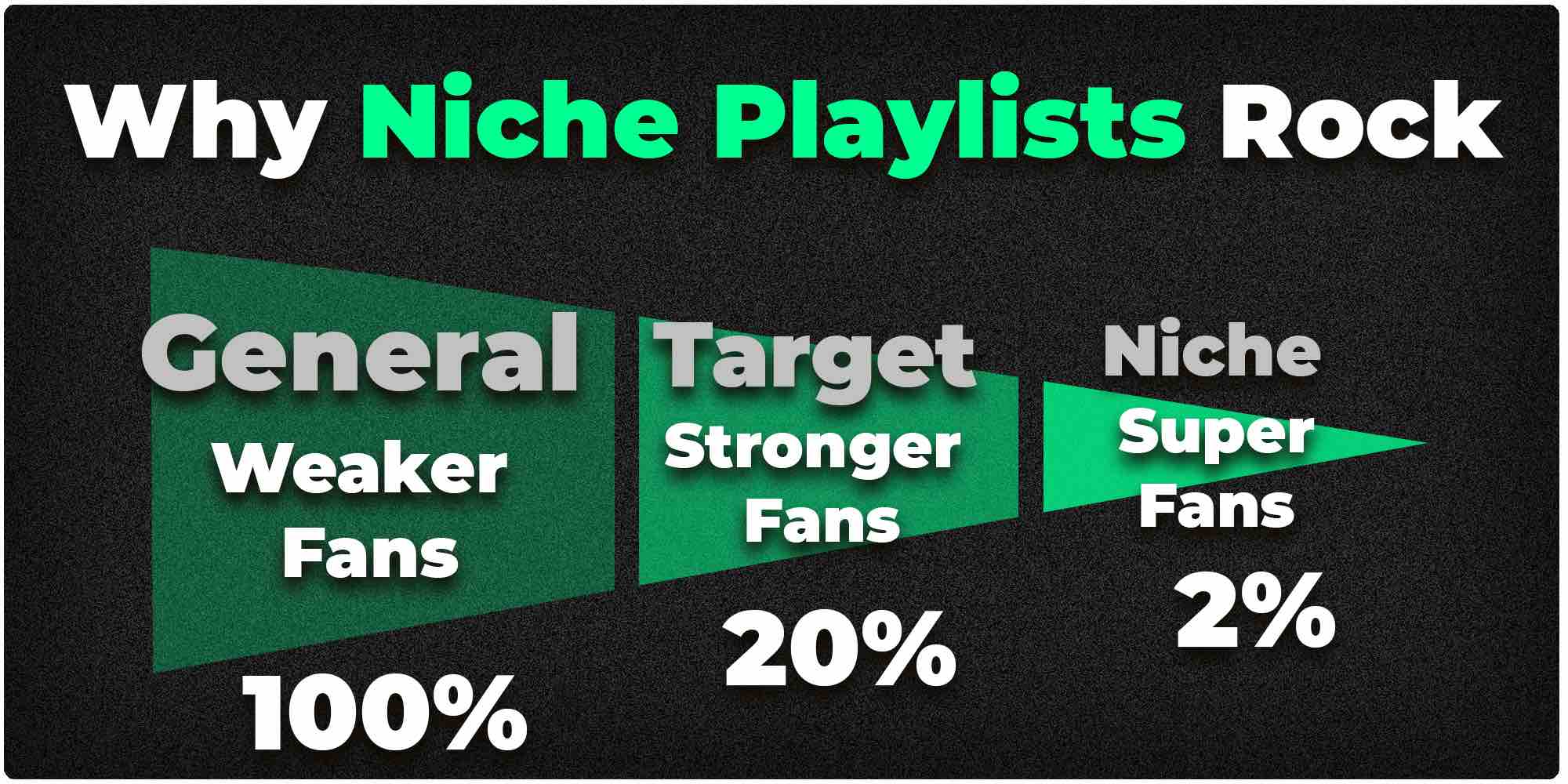
The good thing about niche playlists is that they take the most die-hard followers of your style of music and put them together.
All of the songs in a niche playlist are designed to mesh well together.
You're going to have to depend highly on these super core fans to help give your music career a strong foundation.
In the beginning, it's quality over quantity.
As you get bigger you naturally expand! Why do you think Drake went from rapping to making pop songs?
He naturally cultivated a core fanbase, and then he through some more dance-able tunes in there so he could get mainstream support!
If danceable music isn't you may need to stay niche for a while before having the opportunity to make your music really go viral.
Here are 2 ways to test how danceable your song is:
- Ask your 5 closest friends to make a dance TikTok to it
- If you don't have friends - make your own (less embarrassing than you may think)
If danceability isn't something you're interested it's fine!
You may need to stick to emotion-based playlists. 😉
#4. The valence (emotion isn't right)
Imagine if you asked you asked your friend for emotional support...
But instead, they changed the topic to something else.
You feel robbed in a way, no?
Emotions are a sensitive thing, it's something that allows humans to connect to each other.
A curator's #1 priority when selecting songs is making sure that the valence is correct.
What you may not expect is that even playlists with various genres have similar valence, so make sure you audit it first!
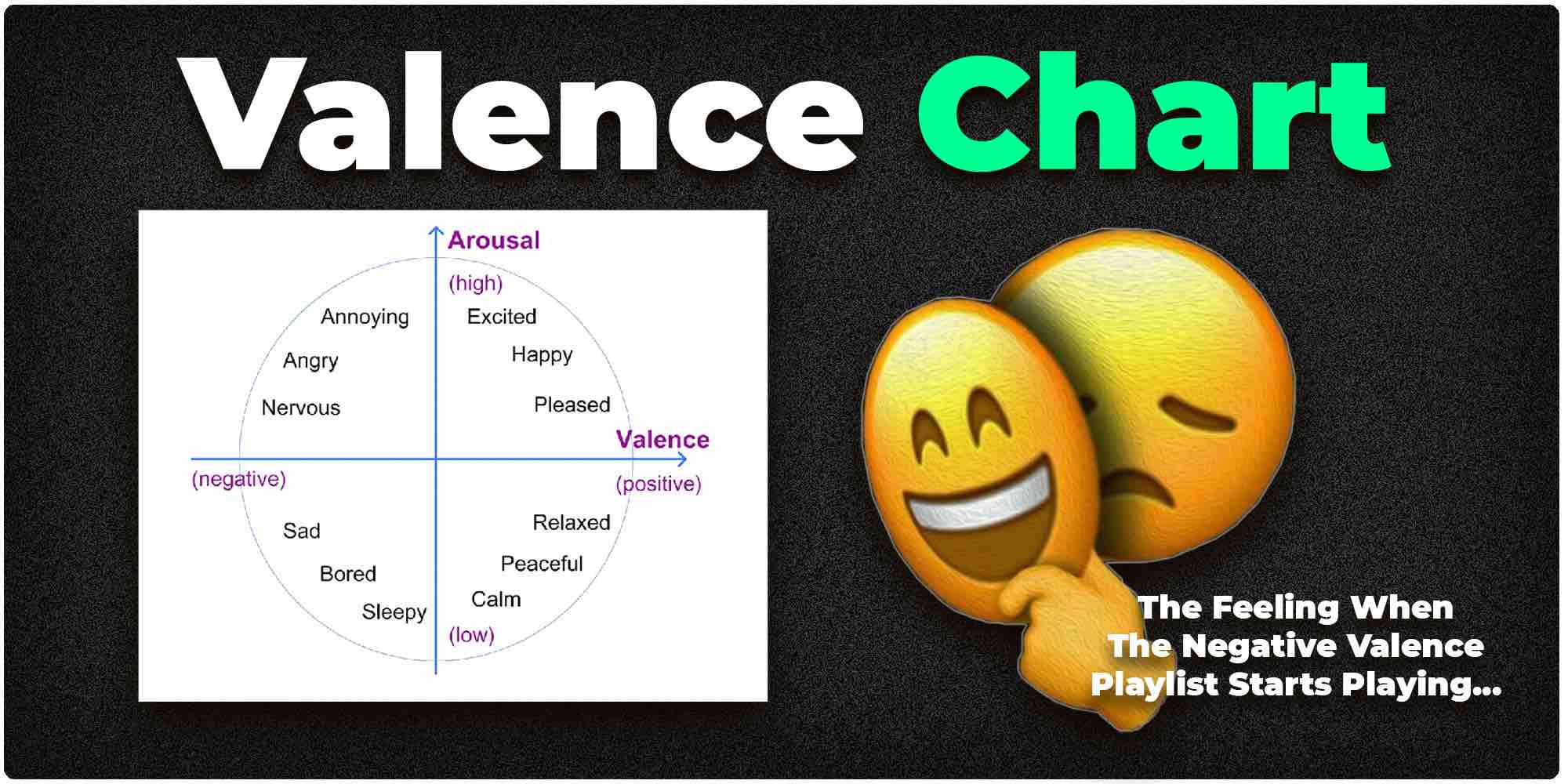
You've just gotta feel this one.
There isn't really much logic that can be applied to emotions, unfortunately.
Use your heart! (sounds cringe? I know... Haha that's life though.)
#5. Too many or too few words
Some people don't want to hear your attempt to beat Eminem's faster rap record.
Nah, for real though. This also goes for song vocals, sometimes just the instrumental or the beat behind carrying the song.
Many curators have their one speech ratio, impossible for us to know.
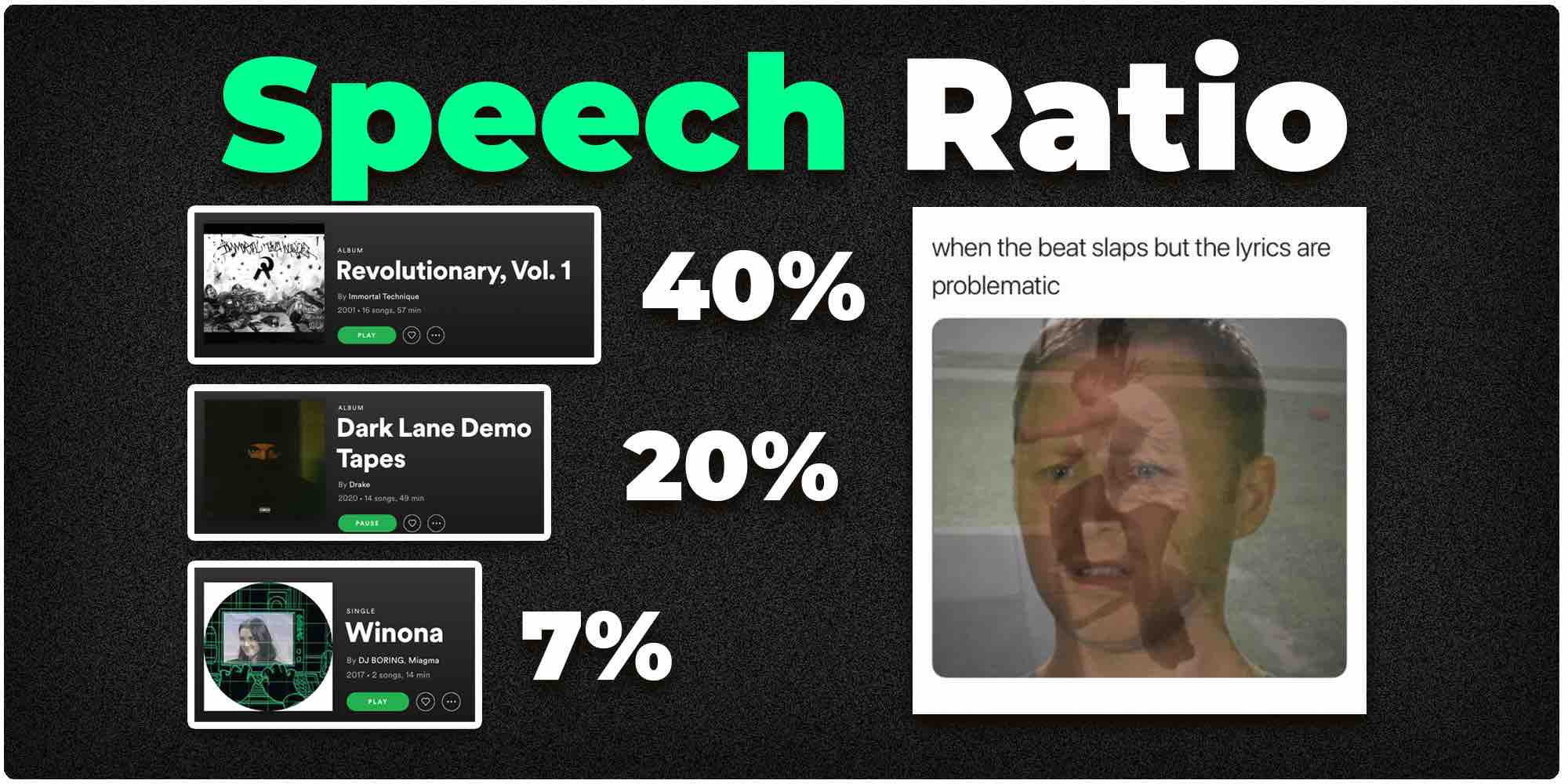
Unless the playlist is listed specifically for beats, this is hard to find out.
From my experience, these names generally indicate less speechy playlists:
- Lo-fi
- Beats
- Certain sub-genres of electro (future house, dubstep)
#6. Energy levels do not fit the vibe
Let me tell you a story...
One time for my birthday, I made the mistake of bringing friends from two friend groups together...
Group A:
- Nerds
- Coders
- Anime fans (shout out Naruto though. LOL.)
Group B:
- Mainly rappers
- Car guys (we all know a guy like this)
- Lady-killers
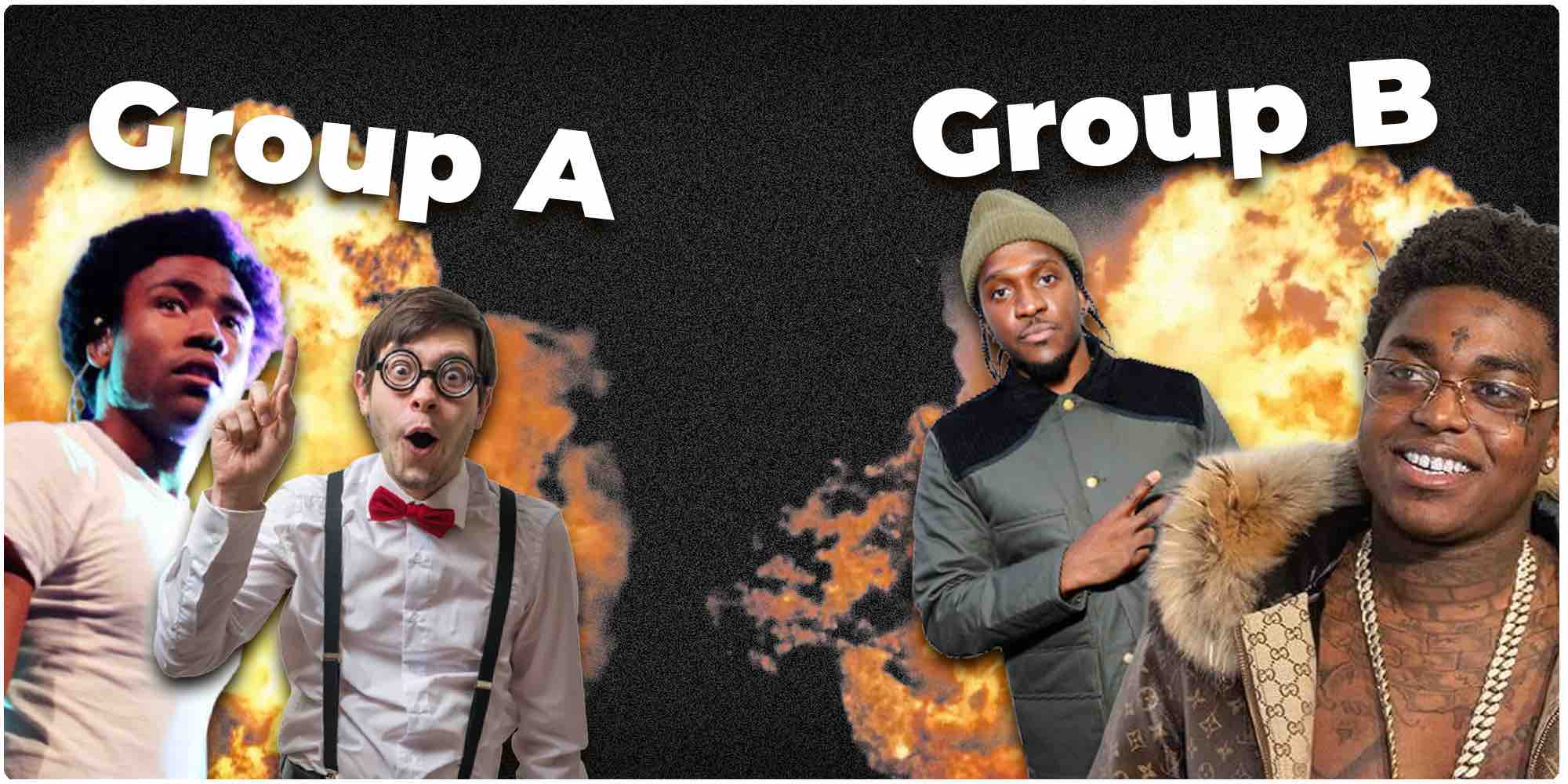
Guess how it went?
A total f**cking nightmare.
Ruined my birthday, and was a mess trying to be the liaison between all parties. Lesson learned: don't merge many types of energy.
This is the same for playlists! Curators don't want to confuse the listener by throwing random vibes at them.
People generally follow a playlist for a certain vibe and only stay assuming it's gonna be maintained.
The head-bop test is a simple process.
If you can't bob your head it's a low-energy song - If you can bob your head it's a mid-energy song.
If bobbing your head isn't enough to contain you, it's a high-level song.
MID ENERGY:
HIGH ENERGY:
#7. Your song is out of synch
If you have no budget for a producer, or you're new at self-producing then this is especially for you.
The bad news
- This is the most brutal reason for the rejection
- Your release (quite possible) is tarnished
- You may be forced to take down your song
The good news
- If you can overcome this issue, your career will improve tenfold
- This allows you to grow as an artist
- You understand more about the music production process

Nothing can really "save" a bad mix unless you go back on your computer and mix it again.
That being said, this is what you should do If you are constantly rejected for your song being out of sync.
Let's Hope you didn't delete the original files!
I highly recommend getting a producer/engineer to take a look at it.
They can help sync your vocals and the beat together nicely.
Oftentimes, you'll have to re-record some parts of the song to give it a better punch or melody, or even get a new beat to use.
Telling people their mix sucks isn't a hobby of mine.
That being said... Unless it's fixed you're not going to go that far in the industry.
A decent producer can charge you from $25-$200 to clean up your mix - I recommend NOT going to your friend.
In many cases, your friend is biased, a stranger will keep it strictly professional.
If you:
- Don't have a producer
- Don't have an engineer
- Have a low-budget
Perhaps the song sounds really good in your headset but sounds bad on your speakers.
You must make sure all components of the song are mastered!
It needs to sound good here:
- TV
- Earbuds
- Headphones
- Speakers (monitors)
- The car
People listen to music approximately 90% of the time they drive somewhere (assuming they're not in a conversation with a friend).
I hope you enjoyed this Spotify promotion guide, be sure to check our other articles!
HOW TO LAND ON SPOTIFY PLAYLISTS
I don't have the right to judge you or your music.
What makes "good" music (if that even exists) is a subjective thing. :)
That being said, this is a music business.
Getting on Spotify Playlists isn't just about how good your song is, it's a mutual exchange.
Here's a clear picture:

Nothing personal, it's all business.
You give the curator your music - and in exchange, they give you exposure.
It's an investment. You can get more streams, or it might not change very much.
You understand the risks involved when it comes to investment.
The curator risks a lot when doing these placement deals:

Common risks to watch out for as a Spotify playlist curator
- Over-saturating their playlist
- Losing your hard-earned playlist followers
- Burning all the money spent on growing advertising
- Wasting countless hours building a following
You must take time to learn how Spotify playlists work to find success!
Due to the literal hundreds of submissions coming through every day, curators charge a price to be placed.
This covers their ad spend as well as makes the whole operation worth their time.
Limited supply + increasing demand = money opportunity
All business-minded people would do the same.
You also risk spending money on Playlists but it isn't 100% assured that the playlist listeners will instantly become fans.
You may increase a huge amount or stay practically the same.
Even if you get added to a playlist, the listener can simply skip your song if they don't like it and it won't be counted as a stream.
We can't control what happens to what the listeners do when they encounter your song!
run ads Or Spotify Playlist Campaigns?
So... If playlisting isn't reliable, are ads any better?
The answer is yes and no.
Sure, With ads it's much easier to track who clicks on your song and you can virtually run ads today without having to pitch to anybody.
But you can always just pick genre/location based playlists so the advantage isn't really much better.
Spotify Playlists are effective because they target FANS rather than just average listeners - Spotify is designed for listeners to follow you and browse new music! 😉
If you're on a low budget - you are practically out of luck if your method to attract new listeners is through ads.
See these are the three main organic methods of music promotion
- Paid ads
- Playlists
- Radio (haha just kidding… this stopped in like 2006)
You’ll have an easier time learning rocket science than how Facebook/Instagram ads work.
Just playing bro, you don’t have to be Elon Musk - but it’s SUPER costly to learn
All I'm saying is that you should make a decent balance.
Test ads, test playlists, and test influencer marketing!
Here is a good balance: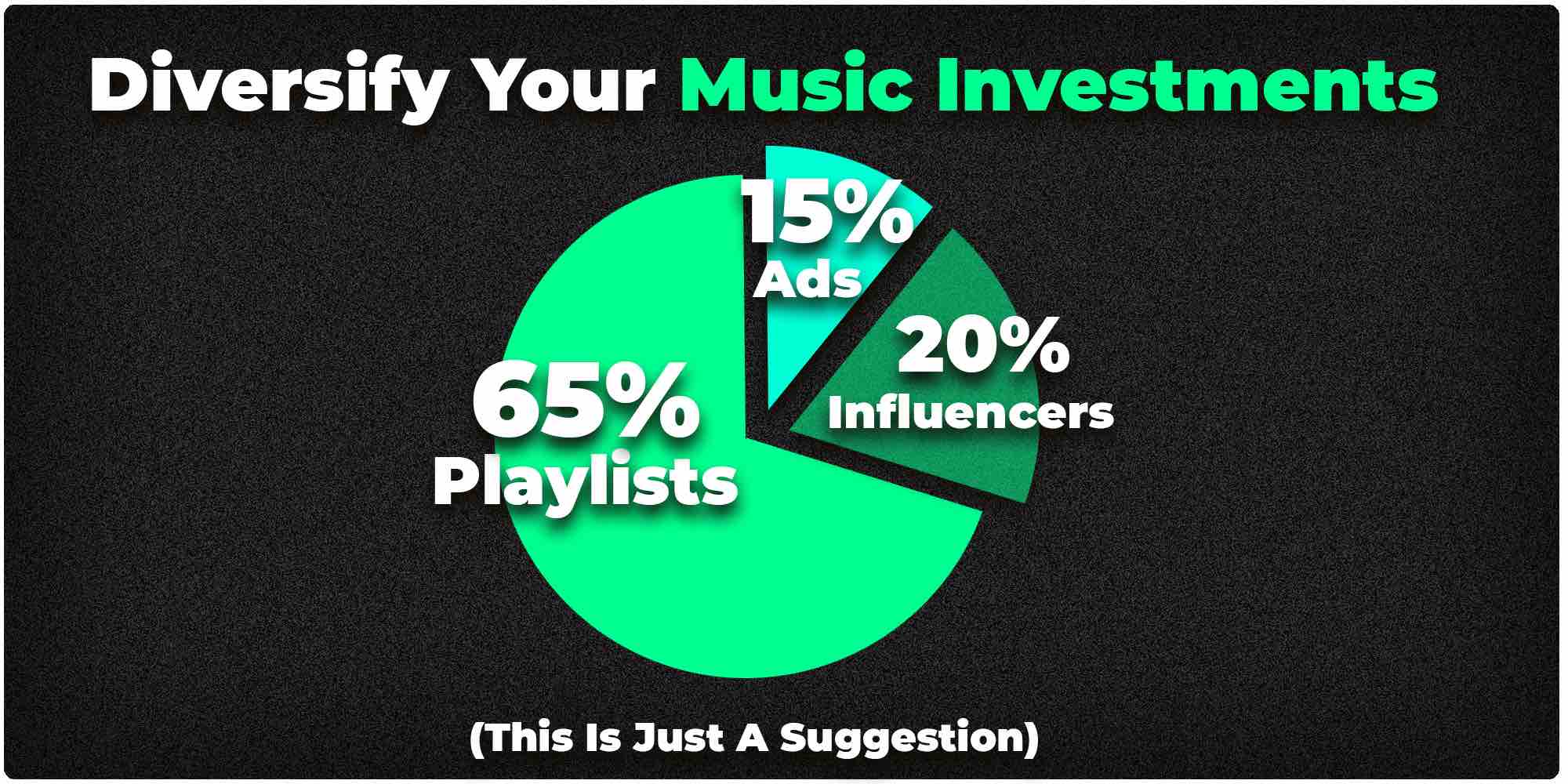
P.S. This is not investment advice, just a bunch of data that I have observed :)
Feel free to make choices based on your risk-tolerance and music industry knowledge!
Playlists are worth more than just streams.
Ever wonder how to get on Discover weekly?
There are a couple of ways.
Since it's an algorithmic playlist - you need the Spotify algorithms on your side.
One of the ways Spotify indexes your songs into categories is through the song's elements itself (tempo, BPM, speechless, danceability, genre, etc.)
Not only that, it also uses LISTENER'S data.
What does that mean? If 10 people listen to 10 Ed Sheeran songs a day, then one of yours...
Who do you think Spotify will most likely push it to?
You got it, the Sheeran community 😎
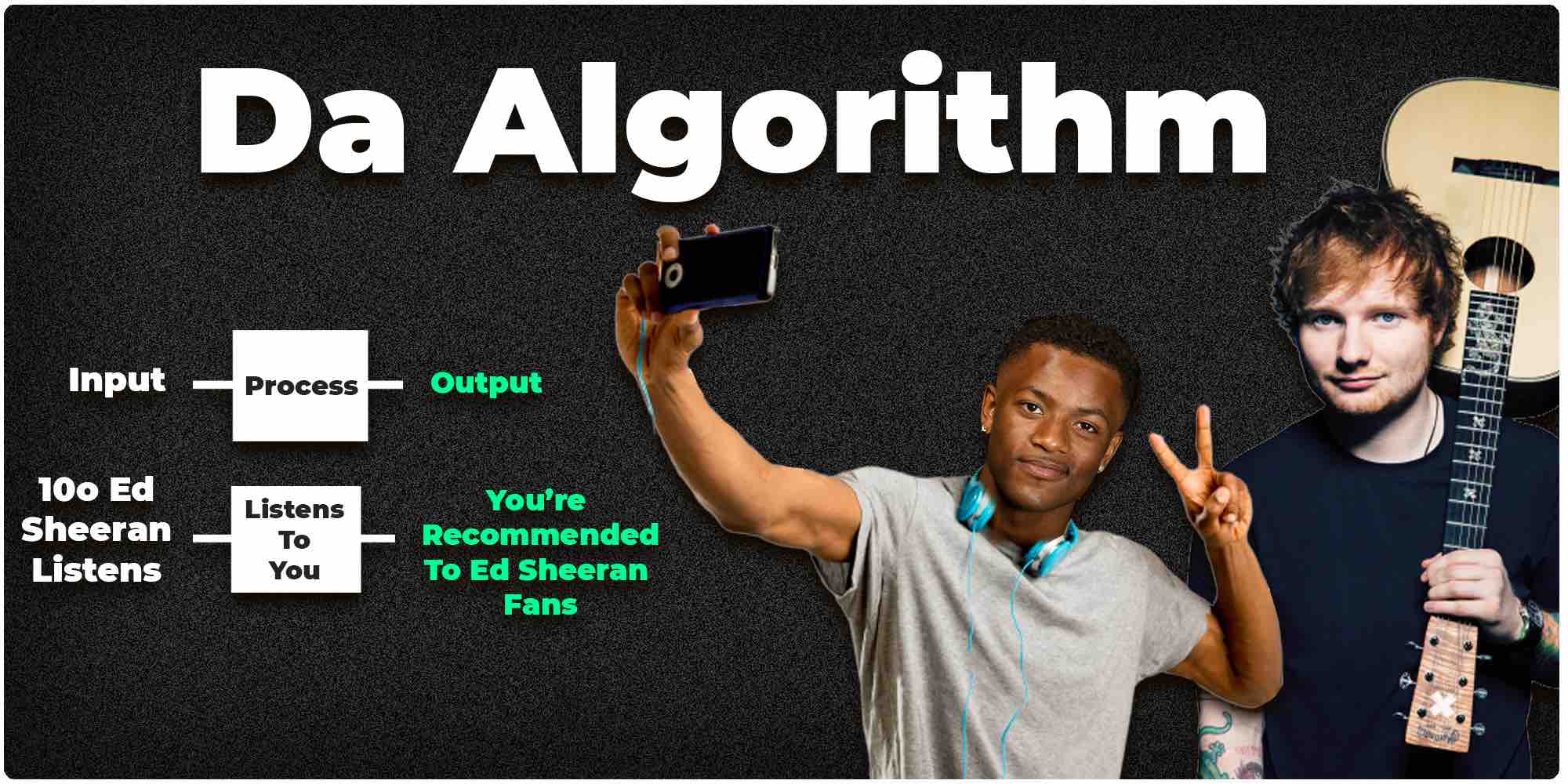
Get your music on playlists now.
It’s time you get your exposure and listeners up - playlisting by Boost Collective has been trusted by 50,000+ artists worldwide.
It’s easy: Search your song, get on playlists, and track your campaign.
What’re you waiting for? Tap in - and get added to playlists in 24 hours.
Join Boost Collective for free here.
